Army Worms
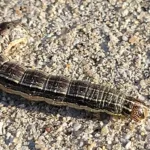
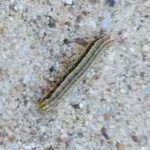


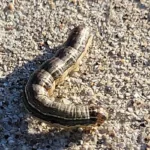
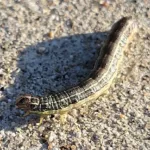

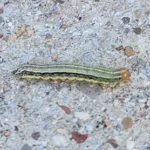


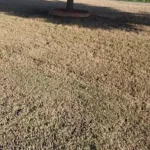

Fall Armyworms are the most abundant during late summer or early fall. The typical life cycle takes about 30 days under southern late summer conditions. The risk of damage decreases with cooler temperatures since the pests develop slowly in cooler temperatures. Fall armyworms came in record numbers in the late summer of 2021. In all my years as a professional Azle Pest Control applicator, I have never seen an infestation of this magnitude. These insects are sensitive to cold, although this major outbreak happened in Texas even after the late hard freeze we had early this year. Armyworm caterpillars are typically found about an inch long are easily found in the soil using soapy water. I will explain this method in more detail below.
Are Armyworms destroying my lawn?
Starting in August 2021, the largest population of armyworms that I have ever seen happen all over Texas, including Springtown, Azle, and Weatherford. First, I saw beautiful lush lawns, go-to brown and dead, over a matter of a couple of days. It appeared like someone sprayed herbicide everywhere, killing off the yard. Then in further inspection, I see the armyworm caterpillar destroying people’s yards. So if you go outside and see large dead areas of your yard, then you need to look for caterpillars and moths.
How to test for armyworms
One simple way I have found for people to test for armyworms on their own is soapy water. You can take a gallon jug, or even better a 5-gallon bucket, and fill it with water and add soap, dawn dish soap will work fine, just a few squirts, nothing scientific. Then in an area, you suspect armyworms might be feasting on your lawn, pour out the soapy water and watch. Most likely you will see the armyworms make their way to the surface. If you spot them then count how many you see in a square foot, this will help you to know if you have severe infestations or moderate infestations. If not then try a few other areas to be sure. In the later summer, the armyworm will be done feasting on the leaf tissue within a couple of weeks if that. After that, they will seem like they disappeared.
Where did the armyworms go?
As they seem to go away as fast as they came, everyone plagued by these pests must realize that the armyworms are not done. They are beginning to pupate; as of yesterday in Texas(August 22, 2021), I saw the first pupal stage armyworm. This is when the armyworm caterpillar is turning into a moth. It encases itself for a few days before the small moths appear.
Seeing that armyworm pupate is essential.
How long until we see the armyworm moths?
During summer, if the armyworm comes early and robust as it has, and with this warmth that Texas is currently seeing, the armyworm moths will start emerging in around six more days. The female moths will lay most of their egg mass in the first five days and lay a typical total of approximately 1,500 eggs.
updated August 24, 2021, I saw my first armyworm moth in Fort Worth by Eagle Mountain Lake. In this area, most of the homes have irrigation sprinkler systems. I believe this has encouraged faster reproduction. If it wasn’t just a random armyworm moth then this means the next big flush of armyworm caterpillars could start in the next few days in certain areas! Get ready and protect your Bermuda grass!
Update September 2nd, 2021, almost every yard I have treated in Fort Worth for pest control the past few days has had armyworm moths emerging out of the grass, specifically bermudagrass, the armyworm’s favorite food source in Texas.
How do armyworms decide where to lay their eggs?
The moths will fly around during the early morning and late evening and find the best lushest lawns of bermudagrass to lay the eggs. Then, within a few days in North Texas, those eggs will hatch out and start eating the yard laid in with this warmth. The armyworm eggs are not always laid in the grass, they can also be laid on the underside of fence pipes, eves and overhangs, tree leaves, garden plants, grassy weeds, really anything but typically I see them lay eggs on the underside of things around bermudagrass when it isn’t in the grass itself.
What is next for the armyworms?
This means within a little over a week from seeing the armyworm moths appear in larger numbers, the next batch of green lawns will start to turn brown from the armyworm larval moth, aka armyworm caterpillar. This time will most likely be much worse because of the enormous increase in numbers by the reproduction rate. The likely survival rate is due to the weather pattern Texas has had this year.
What can I do about the armyworms?
The goal is to get your property treated right away with a treatment that will kill the armyworm larvae as they eat and moth as they emerge or as they lay the eggs. The moths like to hang out in the thatch area of the grass, and consistently watered grass is their favorite!
Luper Industries pest control is working hard to get to everyone’s property to protect it before it is too late. However, once the next round hits in the next few days to the next few weeks, getting a licensed professional out will be challenging to take care of it. Most likely, even obtaining a chemical to treat it yourself will become problematic.
Armyworm Biology
Fall armyworm caterpillars damage a lawn by chewing the grass blades. These creatures tend to be most active on the grass in the early morning or late afternoon. The adult fall Armyworm is an ash-gray to reddish-brown moth with around a one-and-a-half-inch wingspan. Moths eat nectar and live an average lifespan of about ten days. Fall worms are permanent resident inhabitants in Southern and Central America. Moths may be present at the site, and you may not necessarily see any larvae because of the lifecycle stages.
Armyworms in your Lawn & Garden
Armyworms have been a significant pest in the South. Armyworms are large caterpillars about one and a half to 2 inches long when fully grown bearing long stripes lengthwise on the body and a netlike pattern on the head. They attacked various plants, particularly turf grasses, but seem to prefer well-fertilized bermudagrasses, which are also well kept. They often eat open and visibly sometimes when they are not on display, making them relatively easy to track.
Armyworms in turf grass
The armyworm is the insect that causes the most significant problems at golf courses and residential landscapes. The True Armyworm, Mythimna (= Pseudaletia ungipuncta) is the most commonly known armyworm in Texas. Infestations are difficult to predict, but infestations appear to develop every year, mostly after first fall rains. The fall and yellow-striped armyworms are common in Texas, and the true armyworms Mythhimna are hard to predict when the weather is too bad for the lawns.
Fall Armyworm Damage
Fall armyworm larvae are extremely destructive pests that feed upon many different vegetables but prefer grasses and corn as their preferred host plants. It attacks most cool winter grasses and heat seasons. Bermudagrass is the most common host. Damage to turf may vary between appearance and severity depending on the types and techniques of grass. Typically all the damage is done during the larval stage.
Biological treatment
Bacillus thuringiensis and spinosad applications are a couple of options to control them without affecting other insects. Adding a few natural predators or parasites may reduce armyworms’ number. Most species of birds consume armyworms. Parasitic flies, wasps, and other beneficial insects that are natural enemies to fall armyworms also regulate them. They can be seen infested lawn areas flying and hovering above them. Nematodes such Steinernema carpocampsae are commercially available and applied at roughly 25 million per 1,000 square ft of turf land. Water turf before and immediately after application of nematodes. Apply these beneficials at dawn or late night to eliminate direct sunlight and extreme heat. Repeat nematodes could be needed to reach Armyworm control. Continue applying to control armyworms.
Chemical Treatment
This is the most common treatment for armyworms; it is typically the fastest. The chemical treatment of armyworms should be prioritized at the first sign of armyworm activity. If the armyworms in lawns are caught early enough, you can combine a long residual insecticide and an IGR to ensure that the insecticide doesn’t take care of it, then the IGR will control armyworms. If you have an armyworm infestation, I would highly recommend that you call in a professional.
This army could destroy your lawn.
Armyworms can enter the Southern lawns, specifically through Bermuda grass. The first signs of trouble are tiny brown patches of grass with the backs of the grass blades being sliced out. Some grasses may have been eaten completely.
Luper Industries Pest Control goes to war with the armyworms in Springtown, Azle, and Weatherford.
We have created a technique that we have had great success with on the armyworm treatment. Schedule an ultra supreme pest control special and get this problem, along with other pests, taken care of ASAP!
- Are armyworms bad?
Yes, armyworms are horrible. They are dangerous to our lawns and gardens. One of the most annoying things about armyworms is that they eat your lawn without you noticing. After one or two days, you see brown patches or a completely brown lawn. This is when you should call for help! The earlier you notice the better!
- What do armyworms eat?
Armyworms eat your bermudagrass amongst other things! They eat it all up fast. This is why you only notice the damage when half of your lawn is gone.
- What do armyworms turn into?
Armyworms turn into moths, they are small brownish to greyish and are only around to quickly reproduce.
- How can you tell if you have armyworms?
You may find them on the ground if you are really close to your grass. The armyworms will be quite small when young, but you have to check carefully. Follow my procedure above.
- What is the best way to kill armyworms?
Unfortunately, it is really hard to kill or catch Armyworms before the destruction has gotten to bad. They are like ninjas because you won’t notice them for so long until they have already eaten part of your lawn. To get rid of these people try one of the treatments I suggested above or schedule a professional to come take care of the problem.
- Will grass grow back after armyworms?
Most of the time, your grass will grow back. It might not be as thick or healthy as it was before, but it will come back. The problem is if the armyworms do enough damage then it makes your lawn susceptible to other problems that could make it even worse such as fungus and other pests.A